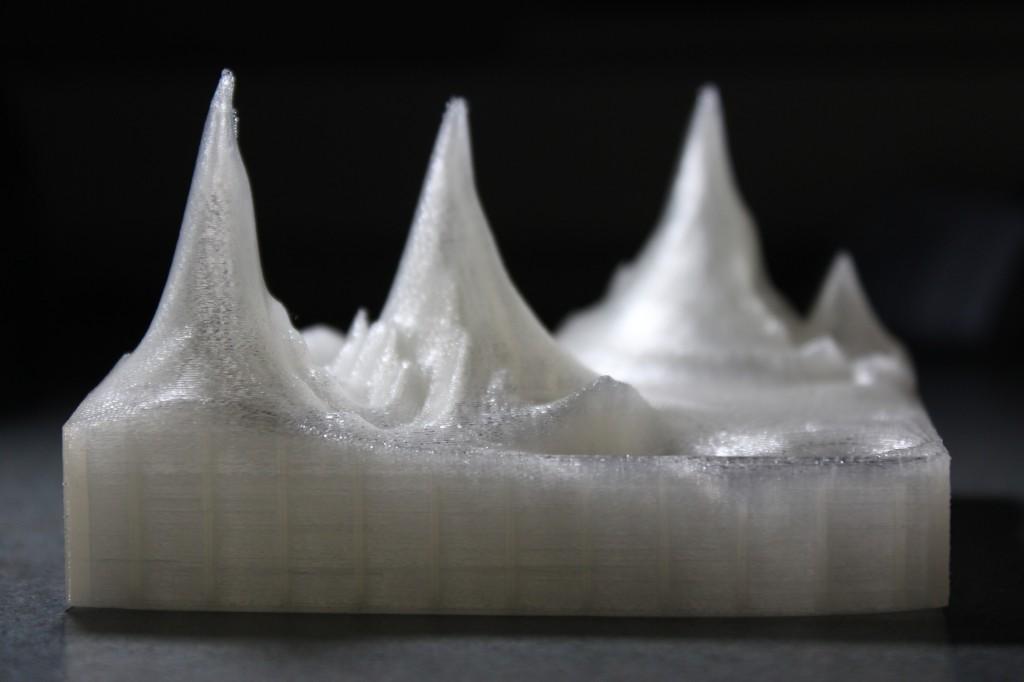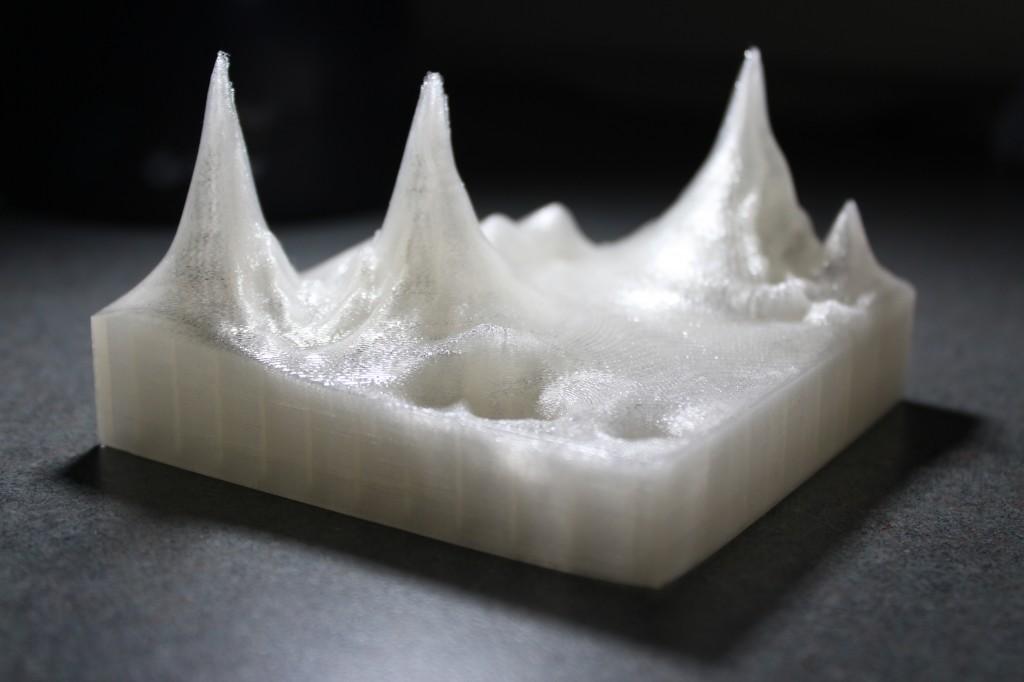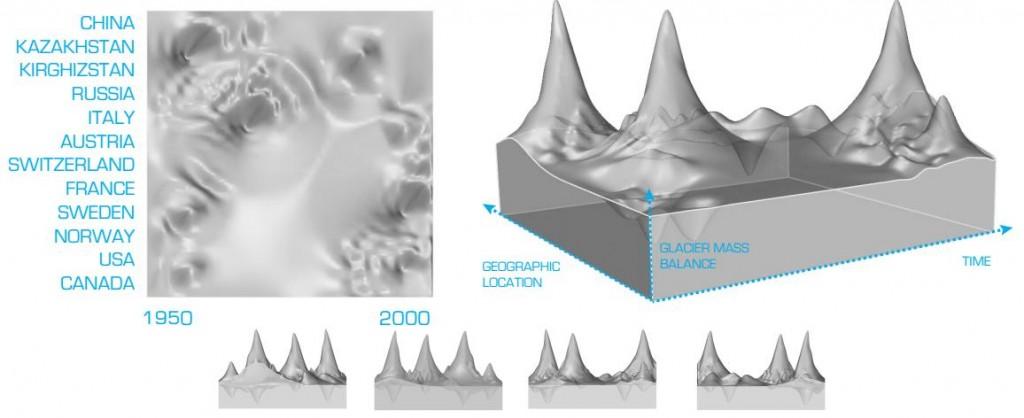 3D Printing has plenty of uses. If you frequent this very site, you will learn of new uses on a daily basis. One of the great things about the technology is that it allows us to get a clearer picture of 3-dimensional objects, buildings and people. While it is a very useful technology in creating interesting products, we are seeing it utilized more and more in the visualization process to help us better understand both nature and data. We’ve seen it used to show a 3-dimensional representation of earthquakes, hurricanes, and other forms of data in the recent past.
3D Printing has plenty of uses. If you frequent this very site, you will learn of new uses on a daily basis. One of the great things about the technology is that it allows us to get a clearer picture of 3-dimensional objects, buildings and people. While it is a very useful technology in creating interesting products, we are seeing it utilized more and more in the visualization process to help us better understand both nature and data. We’ve seen it used to show a 3-dimensional representation of earthquakes, hurricanes, and other forms of data in the recent past.
One graduate architecture student, studying at the University of Illinois at Urbana-Champaign, named Angela Ng has come up with yet another way of using 3D printing for the visualization and understanding of both nature and the data formed by nature.
She is using a MakerBot Replicator 2 3D printer to print out 3-dimensional representations of both the effects of land-ocean temperature on glacier mass balance, as well as the organizational systems of three different biological forms: Lily of the Valley, Rhodotus Palmatus, and Maze Coral.
“The point of these investigations is to explore how data and biological forms can inform architectural design,” Ng told 3DPrint.com. “Since data is becoming a big thing nowadays, it’s worthwhile to investigate how architects can design using data. It’s also worthwhile to explore the organizational systems of biological forms because they teach us how architecture can be organized in terms of circulation, structure, and adaptability.”
We’ve seen world renown architect, designer, and professor Neri Oxman use the combination of 3D printing and nature to create some truly revolutionary works of art, such as her Gemini Chair, among many other interesting pieces. Ng, however, isn’t using 3D printing to create works of art, but instead is using it as a research tool to better understand how the world’s best architect, nature, builds the earth’s own designs and species.
 3D printing has been around for several decades, but only recently has it become a tool accessible to almost anyone. The technology takes the entire visualization process of traditional virtual 3D models to a whole new level.
3D printing has been around for several decades, but only recently has it become a tool accessible to almost anyone. The technology takes the entire visualization process of traditional virtual 3D models to a whole new level.
“It’s one thing to see the 3D model on your computer screen, but it’s something else when you can physically hold the 3D printed model,” explained Ng. “What I loved about the glacier model was that it actually turned out to look like ice/glaciers. It’s reflective and fluid, which was made possible by using clear PLA. The peaks and valleys show the glacier mass balance over time in different geographical locations. I’ve attached some photos of the model and some diagrams here for further explanation.
In researching and studying the effects of land-ocean temperature on the glacier balance here on Earth, through use of her own 3D prints, Ng was able to extract the following information:
- Land-ocean temperatures have been rising at an increasingly faster pace over the past half century, regardless of the geographical location.
- In relation to this increase in land-ocean temperatures, glaciers have been decreasing in mass balance for the most part.
- An exception is in the Arctic Circle, where glacier mass balance has increased over time in Norway and Sweden.
At the same time she feels like the 3D representation also has the ability to influence architectural design. Perhaps a larger influence would be the other 3D prints that she made, of various species that we find in nature. The species that she focused on were the Lily of the Valley, Rhodotus Palmatus, and Maze Coral, all of which feature many unique structures within themselves, making them great examples for architectural design.
What do you think? Is 3D printing a better tool for learning about nature and how to incorporate it into architecture, than that of 3D models on computer screens and photos in text books? Discuss in the 3D Printing of Nature forum thread on 3DPB.com.
Subscribe to Our Email Newsletter
Stay up-to-date on all the latest news from the 3D printing industry and receive information and offers from third party vendors.
Print Services
Upload your 3D Models and get them printed quickly and efficiently.
You May Also Like
Consolidation in AM: How 2025 Is Shaping the Industry’s New Normal
The first half of 2025 has been marked by a clear shift in the additive manufacturing (AM) industry. Companies are no longer just focused on developing new tech by themselves....
Etsy Design Rule Change Reduces Selection of 3D Printed Goods
Online marketplace Etsy has implemented a rule change requiring all 3D printed goods on the site to be original designs. The update to the site’s Creativity Standards states, ¨Items produced using...
U.S. Congress Calls Out 3D Printing in Proposal for Commercial Reserve Manufacturing Network
Last week, the U.S. House of Representatives’ Appropriations Committee moved the FY 2026 defense bill forward to the House floor. Included in the legislation is a $131 million proposal for...
Transforming From Tourist to Native: Duro CEO Michael Corr Explains Why the Company Rebuilt its PLM Software on AI
In these early innings of the AI boom, many market analysts have expressed concern that AI spend has gotten too far ahead of the technology’s proven ability to deliver significant...




































